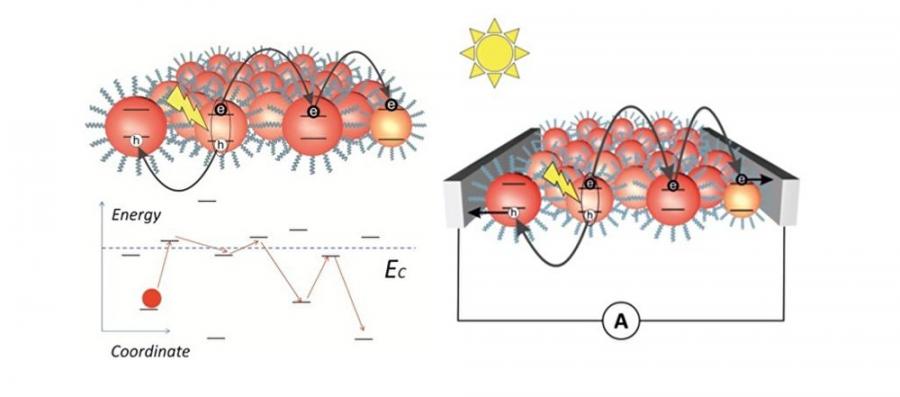Scientists from the National Research Nuclear University MEPhI have developed a process for making a next-generation solids consisting of quantum dots (QD) or semiconductor crystals with a diameter of mere nanometers. The results of research were published in the Journal of Physical Chemistry Letters. It will help to develop affordable solar panels that absorb sunlight in a broad spectral range.
Due to the reduction of stocks of primary resources humanity is in dire need of alternative. One such source is the Sun, its light can be converted into electrical energy. Devices, which is used for that, is called photovoltaic. At the moment they are based on inorganic semiconductor materials based on silicon. But they have some significant drawbacks. First, the efficiency of silicon panels is limited. It is around 20%, because such elements are not able to recycle the entire spectrum of solar light and radiation just passes through them. Secondly, the production of silicon solar cells is a complex and expensive process. So today people around the world are actively exploring the possibility of using the batteries of new promising materials, organic and nanohybrid semiconductors in particular.
When we talk about quantum dots, it should be remembered that they consist not of one but of dozens of atoms. The main characteristic of these objects is modification of their properties (e.g. optical and electronic), occurring at a certain size and shape of the quantum dot. In the quantum world, physical phenomena cannot be explained by the usual laws of mechanics. It's a microcosm belonging to the electrons, photons, molecules, atoms. There is no clear cause and effect we are accustomed in the macrocosm.
Quantum mechanics is a set of laws whereby it is possible to consider what is happening in the microcosm as if through binoculars. The behavior of single particles (e.g., electrons) may affect the properties of the object. In particular, physical properties of quantum dot’s changes are consequence of the limitation motion of charge carriers (electrons and holes) in space. In a quantum dot carriers immobilized in three dimensions, they are in the "energy hole".
The charge carriers "travels" between quantum dots due to the phenomenon called tunneling transition. It is a process, when an electron "jumps" through the energy barrier, which "height" is greater than the total energy of the electron.

Diagram showing an image of a quantum dot solid condensate and the process of transferring the charge between adjacent nano-crystals
There is an effect of dimensional quantization in quantum dots — changing of crystal properties, in particular electro-optical. The fact is that the number of atoms forming the quantum dot, depends on the difference of energy levels of electrons and holes, and it affects the range of absorbed light.
"The published work shows that the charge and energy transfer in condensates of quantum dots can be described by relatively simple way. This considerably simplifies the task of theoretical modeling of charge carrier transport needed to optimize characteristics of optoelectronic devices based on quantum dots", says one of the authors, Professor in the MEPhI Department of Condensed Matter Physics Vladimir Nikitenko.
The production of quantum dots’ condensates is made by simple inexpensive methods, but it is necessary to carefully choose production conditions and the type of organic molecules, "cross-linking" quantum dots between them to obtain high-quality coverage.
The possibility of replacing the ligands allows to change the distance between the quantum dots and thereby to control the efficiency of energy and charge transfer. Scientists of MEPhI has mastered the technology of ligands replacement at room temperature, which greatly facilitates the process.
“Nanohybrid materials with quantum dots can be used not only to create photovoltaic elements or LEDs, but for more complex semiconductor structures, for example, such that can be used to create highly sensitive sensors of the new generation,” says one of the authors, Professor at the MEPhI Department of Physics of Micro- and Nanosystems Alexander Chistyakov.





